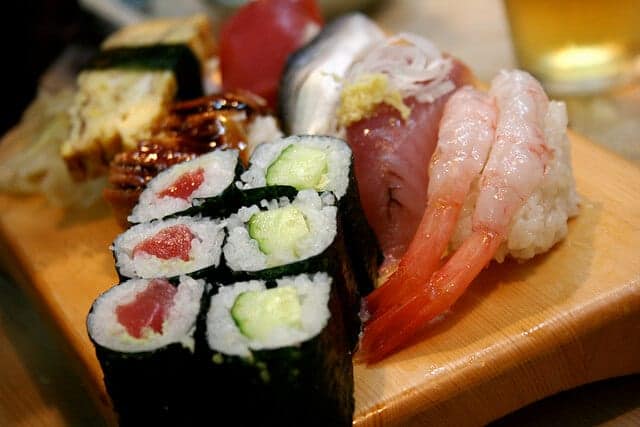While you may prefer your fish raw, you probably don’t want a live parasite, too.
Yet that’s an increasingly common occurrence in the United States and other Western countries as more people consume raw and undercooked seafood meals, according to a new research study published in BMJ Case Reports.
A recent episode involving sushi consumption comes from Portugal, where a 32-year-old man reported to the Hospital of Egas Moniz with complaints of significant abdominal pain. The man also presented with a low-grade fever and told doctors that he experienced vomiting during the past week.

Upon conversations with the hospital staff, the man revealed that he had consumed sushi before the abdominal pain started. Medical staff quickly performed a test of his upper gastrointestinal tract and discovered something that may give pause to sushi lovers everywhere — a “filiform parasite” that was “firmly attached to an area of swollen and hyperaemic mucosa.”
Such cases of parasitic infection are becoming increasingly common, health experts warn. The Portuguese man was infected with a parasite known anisakis nematodes, which are known to “invade the stomach wall or intestines of humans,” according to the Centers for Disease Control and Prevention (CDC).
These worms, which are typically a few centimeters in length, can lead to a parasitic disease known as anisakiasis, which commonly results in nausea, vomiting, pain, blood and mucus in one’s stool, a mild fever and other symptoms.
Related: Study Says You’re Probably Eating Plastic When You Order Seafood
“Owing to changes in food habits, anisakiasis is a growing disease in Western countries, which should be suspected in patients with a history of ingestion of raw or uncooked fish,” report the study authors, including Dr. Joann Carmo, a doctor in the gastroenterology department at Egas Moniz Hospital.
“Gastrointestinal symptoms include abdominal pain, nausea and vomiting and complications like digestive bleeding, bowel obstruction, perforation and peritonitis can also arise,” write the authors.
Where You’ll Find Them
Most cases of anisakiasis occur in Japan, where consuming raw and undercooked fish is common. But the CDC notes — and this new study confirms — that people in other countries are also at risk.
“Anisakis can infect salmon, herring, cod, mackerel, squids, halibut and red snapper,” Carmo told CNN.

Before raw and undercooked fish became popular in Western countries, there was very little chance of becoming infected with these parasites.
“A few decades ago, doctors did not know this infection,” Carmo shared. Yet in recent years that’s changed in a big way.
“In European countries, fish infestation is probably more frequent than we thought,” Carmo told CNN. She said that the species of anisakis that is most frequently tied to human infections “was found in 39.4% of the fresh mackerel examined from different fish markets in Granada, Spain.”
Related: Sorry Sushi Lovers, Your Salmon May Have A Japanese Tapeworm
The best way to prevent the anisakiasis infection is to avoid eating raw or undercooked fish or squid, notes the CDC.
But for diehard sushi lovers who couldn’t bear to write off their fish habit entirely, be aware of any strange sensations you may feel in your mouth after you take a bite.
“Some people experience a tingling sensation after or while eating raw or undercooked fish or squid,” notes the CDC. “This is actually the worm moving in the mouth or throat.”
Richard Scott is a health care reporter focusing on health policy and public health. Richard keeps tabs on national health trends from his Philadelphia location and is an active member of the Association of Health Care Journalists.


![How To: ‘Fix’ Crepey Skin [Watch]](https://cdn.vitalupdates.com/wp-content/uploads/2017/05/bhmdad.png)












